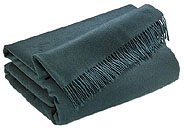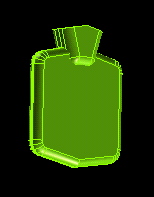Varie ed eventuali
Varie ed eventuali |
|||||
| Sei qui: Varie ed eventuali -> Nello spirito di AIR (3) | Scrivimi |
||||
...e ancora parodie... |
|||||
![]()
| Once more, this passage would be an offering to "Annals of Improbable Research" and its inspiring spirit. English translation by courtesy of Aldo "Ldx" Giove. Aldo, thank you very much ! Italian version: click here ! |
![]()
| Climate recordings obtained during recent years seem to point out a progressive decrease of air temperature during winter; unfortunately, current air pollution levels are too high to allow a further increase in use of traditional heating systems, because of their unacceptably high environmental impact. So, nowadays the need for environmentally friendly methodologies that can better meet the demand of a good temperature control without further impacting the air quality is arising; this will lead to new technologies that at the same time will guarantee a pleasant temperature and a low pollution level.
The broadness of this field doesn't allow a complete review of all ready-and-available methodologies; on the other hand, the urgency of a scientific study on at least some of these methodologies is so high that we preferred to narrow the scope of the study, in order to start as soon as possible to collect information in a scientific and formal sense. So, this study of methodologies has been intentionally restricted to the field of individual thermal control, not taking into account the room thermal control systems in this stage. This study has been carried out according to the following four-steps approach:
The choice of restricting the study on individual thermal control methodologies led to the selection of a population that represents a statistically acceptable sample for subsequent steps. Taking into account that high levels of physical or even manual activity cause an increment of base metabolism of individuals, with a subsequent increase of resistance to a cold environment, and considering that working time is the major part of awakeness time for most people, we decided to select the sample among people mainly employed in sedentary kinds of jobs; for these people, it is to be considered as high priority the need to satisfy the demand of an optimal thermal control of their body in a low-metabolic activity condition. Pre-selection of available devices and technologies A preliminary screening of available devices has been done, paying special attention on aspects like low environmental impact and good portability of devices themselves. After such a screening, the following devices have been selected thanks to their high functional potentialities:
|
||
Identification of main characteristics of considered devices |
 Fig. 1
|
PLAID The device being examined has been designed and built by means of textile work of a specific quality thread, preferably obtained from ovine raw materials (figure 1 shows a typical commercial unit of such a device). Given an orthogonal Cartesian system of reference, topologically it is similar to a flat surface, and it exploits the gravity forces to show its typical self-adaptive structural remodeling following the surfaces of the body it is laying on[1]. From the environmental impact point of view, this device showed the best performance in absolute terms: this result is keyed on its specific "passive" functional principle. Actually, a PLAID device affects the thermal exchange mechanism by means of an appropriate modification of the thermal conductivity coefficient at the human-environment interface level. Its design, in fact, allows the creation of a very high density "micro-cell" structure, that during normal use are spontaneously filled by atmospheric air. In qualitative terms, a layer with a low coefficient of thermal conductivity (constituted by the PLAID device) is set all around the user's body, dramatically lowering the thermal dispersion towards the room atmosphere. |
FLOW This device is made out by an flexible structure equipped with an internal cavity designed to keep a given amount of fluid that has to be pre-heated to a higher temperature compared to the room, achieving this way a "thermal tank" that is able to furnish heat to bodies with a lower temperature. As a difference with the PLAID device, in this case a non negligible environmental impact exists when used: in fact, it is necessary to preliminarily feed the fluid with a given amount of heat in order to increase its temperature (assuming that all of these heat exchanges are carried out in non-phase-transition states), and this preliminary heating can occur only by using external sources of energy that, at the present state of technology, normally imply some pollution of the environment. Thanks to its good availability, its low toxicity (despite cases of death caused by its accidental inhalation have been reported in several studies[2]), but mainly to its high specific heat, the fluid named "water" resulted as the best one to be used in the FLOW device. The thermal control is obtained by carefully laying the FLOW device on top of the body: the device, thanks to the difference of temperature between its fluid and the user's body, transfer heat to the latter one. Obviously, since the room temperature is also lower than the FLOW fluid's one, a similar mechanism of heat transfer takes place from the FLOW device to the surrounding environment, depressing the effective efficiency of the device itself; in this context, the effective efficiency of the FLOW device is defined as "the ratio between the amount of heat actually transferred to the user's body and the amount of heat initially transferred to the FLOW device to bring it to normal operating conditions". The use of a flexible structure allows to FLOW devices to better adapt its shape to the morphological characteristics of the body to be thermal-controlled, ensuring this way a good comfort and an adequate heat exchange surface (figure 2 shows a 3-D computer generated representation of a FLOW device prototype, © and courtesy of NothingToDoLab). |
 Fig. 2
|
 Fig. 3
|
GULP In this case, it would be more appropriate (and more politically correct) to talk about a functional methodology: in fact, generally speaking, it consists in a kind of "overlapping" of the body to be thermally controlled by means of another body (the GULP) provided of autonomous metabolic abilities. By using the above mentioned metabolic processes, the GULP is able to produce heat with the same properties that can be found in the body that is to be heated: the extreme affinity between these two situations allows GULP to achieve the best absolute results in terms of quality of thermal transfer. About this, keeping into account that it's of primary importance to reduce the thermal resistance caused by other skin-protective devices, the best results have been obtained with the adoption of very light and small sized protective coatings: a good example is shown in figure 3 where, thanks to an accurate design of all coating surfaces, an excellent ratio between surface available to thermal exchange and the total surface of the device has been achieved[3]. Given the large prevalence of sedentary activities for the individuals who constituted the sample, the most suitable body area for the GULP device positioning has been identified to be the region of the leg located between the knee and the hip-bone articulation: this region, normally, takes an horizontal displacement while performing most sedentary activities, giving this way an excellent support surface for the GULP device. The natural softness of GULP device ensures optimal characteristics of morphological adaptation of its surfaces with respect to the body to be thermal controlled. Because of the affinities between user's metabolic processes and GULP's ones, the environmental impact is of the same order of magnitude, and therefore it's considered to be acceptable. |
| Experimental and discussion of results After a representative and statistically significant sample of population has been selected, the experimental phase has been started. The aim of this phase was to determine from a qualitative point of view the performances shown by the various device being examined: such a qualitative approach has been preferred to a quantitative one, because the fundamental parameter to be investigated, the satisfaction of users with respect to their body thermal control, is not easily determined unless from a qualitative point of view. Each component of the sample, made by both male and female individuals normally employed in sedentary activities, has been invited to sit down comfortably on a "standard" office workstation (desk, PC terminal, armchair with wheels, other normal office tools, a ficus plant in an average condition) located in the test lab. The test lab has been kept at an average temperature of 15 °C (with a +/- 0.25 °C accuracy) and a humidity level of 40%; these conditions normally lead, within a relatively short time, to a sensation of "cold". As soon as this sensation was beginning to be unpleasant, the tester asked to get one of the three devices under examination; no information about its characteristics were given to the testers before introducing the device in the test lab, in order to avoid undesired interferences with his/her normal perception and logic processes. PLAID The average scoring of this device has been rather high and, furthermore, with a rather even distribution on the whole sample; this is a major point in favor of the overall efficiency of this device. Its lightness and ease of use have been the most appreciated characteristics; the only negative point has been found in its tendency (caused by its design, not optimized for this specific use) to be "hooked" under the armchair wheels. A redesign of the base geometry of the device should allow to considerably improve its performances from this point of view, without negatively impact other characteristics shown in other functional areas. FLOW Despite its promising potential during the pre-selection phase, this device scored the worse results. The reasons for this poor performance can be summarized as follows:
GULP Unexpectedly, this device returned results that are in absolute the most difficult and controversial to understand. The difficulties come mainly from the extremely wide interval of different evaluation results obtained on this device: in qualitative terms, results range from enthusiastic appreciations through cool indifference to the complete negation of any functionality. A second review of obtained results showed a strong correlation between the nature of evaluation results and testers' sex; such a correlation was absolutely impossible to find in the evaluation of other devices under testing. Another specific point lies in the fact that all negative evaluations can never be related to functional lacks of the device, but instead to subjective considerations about the structure of the device itself. The following table summarizes the obtained results (for each tester one or more choices were allowed)
The above mentioned correlation is evident by considering that practically all negative evaluations have been reported by female testers, and the whole positive evaluation group came from male testers: the anomalous distribution of answers got from male testers has been in turn the subject of a further examination, because of the evidently distorted answers compared to the average results. We think it's opportune to perform more in-depth studies and test sessions in order to better evaluate the GULP device from all its possibilities, and to clarify the reasons why a so broad evaluation set has been found. A mechanical consideration that arises during this test session is the need to strengthen the structures of the armchairs normally available on the market, because the sum of weights of both user and GULP device seems to lead to excessive stress for the units now available. Such structural instability phenomena might cause uncomfortable sensations to the user, with consequent negative impact on his/her overall well-being state. Final considerations Three environmentally friendly methods for human body thermal control for preferential applications to individuals normally employed in sedentary activities have been examined. Among these, it seems that only the PLAID device get a good consensus from the whole sample of individuals, while the FLOW device showed some design points that probably should be modified in order to improve its overall performances. The GULP device returned the best results from the qualitative point of view, even if they have been appreciated only by an half of individuals in the sample. Credits Once more, many thanks to the research team MEETINGPOINT from MC-Link. A special mention for Renato "Alpha" Croci because of its encouragement during the start of research's program. Many thanks to Aldo "Ldx" Giove, because of its precious support in translating this passage. Again, for the moral support, Frank Zappa, Tom Waits, Frank Miller, Alan Moore, PK (first series), Pris "Voodoo" Kitaen, the editorial staff and all the models of "Penthouse". |
||||||||||||||||||||||||||||
| Bibliography and references: [1] R. F. Spada "The periphrasis as periphrasis", Guinness University, 1998 [2] cfr. "Dihydrogen Monoxide Research Division" [3] R. F. Spada "Women's lingerie: a design for men or for technology ?", Sauternes Editions, 1999 [4] cfr. Alan Moore "WildC.A.T.s.", Wildstorm Production WildC.A.T.s .is TM and © 1999 WildStorm Productions, an imprint of DC Comics. PK © Walt Disney Italia Penthouse © General Media Communications, Inc. February 2002 |
![]()
Varie ed eventuali |